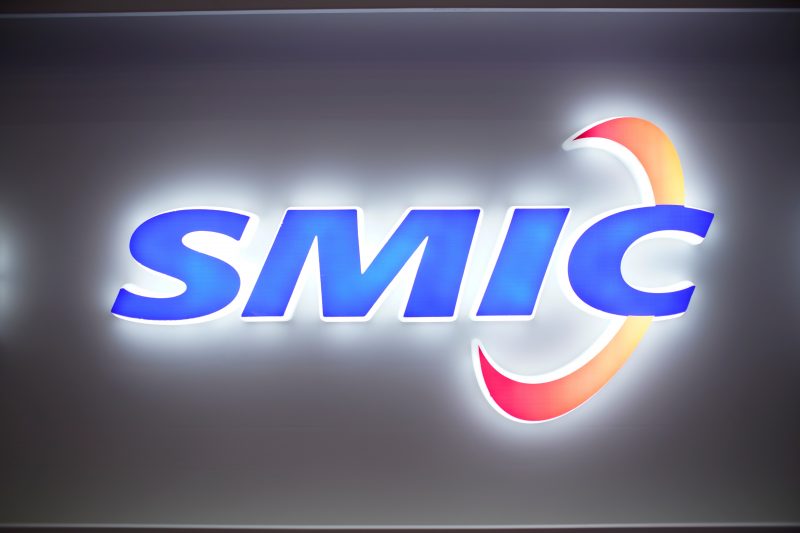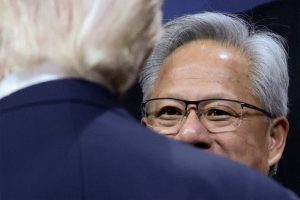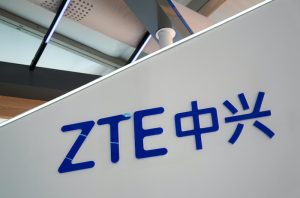The US has moved to cut off China’s top chipmaking plant from US tech imports after it produced a surprisingly high-end chip for Huawei’s Mate 60 Pro phone.
The Commerce Department has reportedly sent dozens of letters to US suppliers to Semiconductor Manufacturing International Corp (SMIC), suspending permission to sell to its most advanced plant, sources claimed.
While many companies had already stopped selling to SMIC South, as the unit is known, the letters are thought to have halted millions of dollars worth of shipments of chipmaking materials and parts from at least one supplier, Entegris.
Reuters found no evidence that Entegris had violated any US laws or regulations.
Also on AF: Russians Named as West Smashes Lockbit Ransomware Gang
That pressure has built since August, when sanctioned Chinese telecoms giant Huawei shocked the world with a new phone powered by a sophisticated chip.
The Huawei Mate 60 Pro was seen as a symbol of the China’s technological resurgence despite Washington’s ongoing efforts to cripple its capacity to produce advanced semiconductors.
The phone also prompted a review by the Biden administration to learn the details behind the chip that powers it, the most advanced semiconductor China has so far produced.
Entegris said it made the shipments in accordance with a valid export licence and halted them after receiving letters from the Commerce Department suspending permission to send products to SMIC South.
The Massachusetts-based company, which produces filters, gases, chemicals, and products for handling wafers, the building blocks for making chips, said it monitors and complies with the “rapidly evolving regulatory requirements” for international trade affecting the chip industry.
SMIC did not respond to a request for comment. Huawei, the White House and the Commerce Department declined to comment.
“This is out-and-out economic bullying and will inevitably backfire,” said a spokesperson for the Chinese embassy in Washington. “We urge the US side to stop overstretching the concept of national security and abusing the state power to suppress Chinese companies.
Trump’s Green Light
The licence suspensions by the Commerce Department, show the Biden administration has taken action against SMIC amid rising pressure from Republican China hawks to stem the flow of US technology to the company and degrade its ability to make sophisticated chips.
Critics say the round of letters don’t go far enough. Republican Congressman Michael McCaul, who chairs the Foreign Affairs Committee, said the Commerce Department should have acted sooner. “This was negligent work by [the agency] and casts further doubt on its ability to fulfil its national security mission,” he added.
The United States has charted a slow course towards depriving SMIC and Huawei of access to advanced US technology.
Huawei was added to a trade restrictions list in 2019 by the Trump administration over alleged sanctions violations. SMIC was added to the same list in 2020 for alleged ties to the Chinese military industrial complex. Both companies have previously denied wrongdoing.
Being added to that list usually bars US companies from selling to the targeted firms, but Trump gave the green light to shipments of certain items to Huawei and SMIC, allowing billions of dollars in US goods to flow to them over the last few years.
The Biden administration unveiled new rules in October, 2022, which effectively banned US suppliers from sending semiconductor tools and materials to advanced Chinese-run chipmaking factories in China including SMIC South.
But US rules allowed companies with pre-existing licences – which generally are valid for four years – to keep supplying the facility.
Entegris shipped chipmaking parts and materials to SMIC South between October 2022 and the end of last year, a person familiar with the matter said.
SMIC’s Taiwan, Japan, Korea Options
China accounted for 16% of Entegris’ $180 million in sales last year, the company said in its 2023 annual report, noting that recent US export regulations “have reduced our ability to sell our products in China and it is possible future regulation could further reduce demand for our products.”
Lita Shon-Roy, CEO of market research firm Techcet, said SMIC South could likely turn to Chinese, Taiwanese, Japanese and Korean sources for most chemicals and parts used in the chipmaking process.
However, if SMIC’s top facility “saw its United States supply chain suddenly cut off, that could potentially interrupt their production for 3 to 9 months depending on inventories,” she said.
She noted it would take time to find and conduct rigorous testing of new suppliers unless SMIC South had done so in advance.
Experts assert that SMIC South is the only SMIC factory with the capability of making the Mate 60’s 7 nanometer chip. Analysis firm Techsights also said in September a teardown of the phone revealed SMIC built the advanced processor to power it.
“I don’t think there’s any doubt that it’s that [factory],” said Doug Fuller, a chip industry expert with the Copenhagen Business School.
Reuters reported in December how a chip designer part-owned by SMIC still enjoys access to state-of-the art US chip design software.
- Reuters with additional editing by Sean O’Meara
Read more:
SMIC, Huawei Big Winners as China Ramps Up Chip Funding
China’s Top Chipmaker SMIC Predicts Modest 2024 Recovery
Huawei, SMIC Set to Defy US Sanctions With 5nm Chips: FT
Probe Into US Chip Equipment Maker’s Gear Sent to China’s SMIC























